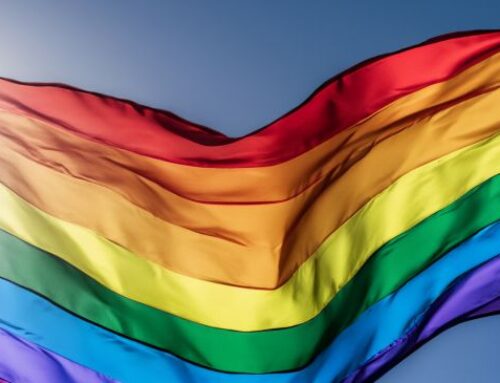
Karissa Haugeberg, a history professor and author, says that pro-life women are merely tools of the patriarchy in a book examining their involvement in the pro-life movement.
Women Against Abortion presents a historical account of women in the anti-abortion movement, highlighting a number of key female leaders. The author, Karissa Haugeberg, is an assistant professor at Tulane University in New Orleans, and edits the Newcomb College Institute’s Journal for Research on Women and Gender.
The very existence of anti-abortion women may appear baffling to the vast majority of political leaders, academics and the media, in an age when reproductive freedom is considered to be among the highest goods. Why, they must wonder, would any woman work against her own freedom and further entrench herself under patriarchal oppression?
Haugeberg, a feminist, appeases her pro-choice audience by providing a detailed, albeit completely biased, American history, from the late 1960s to the 1990s, of important female personalities in what she calls “the largest moral reform movement in the twentieth century,” accompanied by her own aside rationalizations as to why these women would enslave themselves to an archaic mindset.
Haugeberg begins by providing an impressively detailed account of the emergence of crisis pregnancy centres (CPCs) and credits their popularity and growth to the collaborative efforts of Catholic women (the involvement of evangelicals comes later). However, she commingles the facts (which, in themselves, reflect positively on pro-lifers) with accusations and assumed motives. She describes CPCs as vehicles through which anti-abortionists “deploy menacing tactics.” She writes, “By constructing (sic) women with unwanted pregnancies as victims and themselves as saviors, CPC staff granted themselves permission to act paternalistically, deceiving and sometimes lying to the women who entered their facilities.”
Marjory Mecklenburg is featured in Women Against Abortion as the creator and savvy promoter of CPCs across the country. The centres’ success increased after she became assistant state secretary for population affairs and director of the office of adolescent pregnancy in the Department of Health and Human Services in the Reagan administration. Mecklenberg used these positions to partially defund Title X abortion provision and to fund Catholic programs that promote abstinence among teens. Haugeberg, though forced to pay credence to Mecklenburg’s achievements as a woman succeeding in a man’s world, claims, without proof or reference, that Mecklenburg used false data to move her agenda forward.
If Haugeberg’s position wasn’t clear in the first chapter, the title of the second chapter leaves the reader in no doubt. “The Invention of Post Abortion Syndrome” is a bold denial of physical or psychological harm that thousands of women have suffered due to abortion. Haugeberg never provides reasons for such a claim, but merely describes the shift of focus by anti-abortionists from the moral evil of abortion to the trauma it causes, taking as self-evident the non-existence of Post-Abortion Syndrome. Her ideological bias is further evidenced by subsequent subtitles, such as “Formulating Abortion as a Medical Harm” and “The Construction of Post-abortion Syndrome”.
The third chapter focuses on grassroots pro-life activism by feminist Catholic women and how their leadership in the movement was later offset by the entry of “patriarchal” male evangelical pastors. Julianne Loesch and other women believed that the movement was hindered by having so many male leaders. Loesch was founder of “Pro-lifers for Survival” and marketed the abortion issue alongside her anti-war philosophy. She was one of the original crafters of what is known as the “consistent life ethic.” The author praises “Juli” for her “spunky wit to cobble together a coalition of activists who regarded abortion as a complex moral problem” in spite of abortion actually being part of “a larger patriarchal project devoted to disciplining women into becoming wives and mothers.”
Operation Rescue is the focus for the fourth chapter. The movement is portrayed as a powerful crusade taken up by religiously minded anti-abortionists annoyed with the status quo pro-life response. If abortion was murder, it warranted a reaction as such. Joan Andrews is featured as a major player in rallying up tens of thousands of committed participants willing to endure arrest and incarceration. A detailed account is given of this “violent” anti-abortionist’s 120 arrests and how she became a mother figure for grassroots activists across the country.
Finally, it may be speculated that the last chapter was Haugeberg’s most enjoyable chapter to write, as it describes the story of Shelley Shannon’s attempt to murder abortionist George Tiller. An unexpectedly fair and personal account of Shannon’s life described her nomadic childhood, abusive stepfather and religious conversion, all before joining the Army of God, a violent secret anti-abortion group responsible for several bombings, death threats, and murders or attempted murders on abortionists or pro-abortion politicians. Tiller, who specialized in late-term abortions, is lauded by Haugeberg as a dedicated hero inspired by his father’s illegal provision of abortion, and who bravely weathered the violent attacks and threats of many hateful activists. To Haugeberg’s credit, she explains fairly the rift between the majority of pro-lifers who believe violence goes against the meaning of their cause, those who believe that violence is justified, and those who believe that violence is needed. Despite this, she concludes that violent fanaticism is appropriate to the fanatical idea of taking away a woman’s right to choose.
Haugeberg’s citation of numbers, dates, events, and names provide a historic flavour to a biased work. The layout of the book shrewdly consists of five chapters that increasingly villainize pro-life women and the movement as a whole; from providing a history of dishonesty through crisis pregnancy centres, to giving a detailed account of the female abortionist shooter, Shelly Shannon. Through a series of insinuations and blunt declarations, the author’s position is undoubtedly clear: women who claim to act on behalf of or in defense of unborn humans are repressed housewives or religious fanatics, desperate for a cause, due to the restrictions of their creed. They’ve zealously invested in a mentality that enables them to safely remain in the clutches of patriarchy while flirting with the freedoms that feminism has won for them. For the intended audience of “pro-choice” readers, this will be a satisfying read that confirms their point of view; for pro-life readers it will instill anger and dismay. Any reader looking to learn something from a balanced analysis of a controversial topic should look elsewhere.
Marie-Claire Bissonnette is youth director of Campaign Life Coalition.




